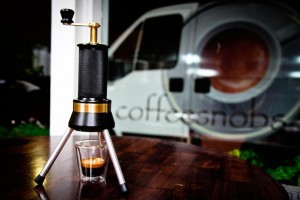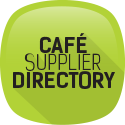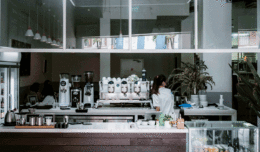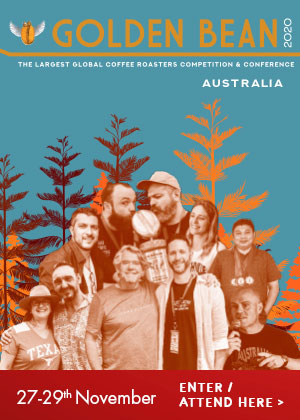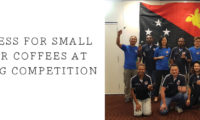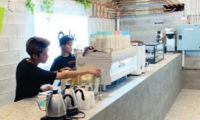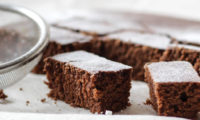STORY BY ANDY FREEMAN
www.coffeesnobs.com.au
In the last couple of years, the buzz words in the pointy-end espresso market have been ‘pressure profiling’, but what is it and how does it make espresso better?
Slayer, La Marzocco, Cimbali and others are producing machines heading towards a $30,000 price tag, and all of the companies are clamouring to be the manufacturer of the best pressure profiling system and the owner of the most amounts of exclusive patents. Their take on what pressure profiling is will vary from pre-set pressures to manual multi stage pressures and even progressive, programmable and recordable profiles.
Most modern espresso machines run at a fairly high standard operating pressure of 9 bar, that equates to roughly 4 times the pressure you have in your car tyres. A lot of the early machines shot straight to 9 bar, and that pressure was held there until the pour stopped. Later machine design incorporated a lower pre-infusion pressure, where water is restricted for the first 3 or 5 seconds before it ramps up to the full 9 bar and then remains at that pressure till you stop the pour and it returns to zero pressure. (Shown as red and green on the graph.)
The ‘old school’ lever espresso machines applied anything up to 12 bar at the start of the pour, and the pressure lessened progressively through the pour until the water chamber was empty and the handle was back upright. Some later lever machines used multiple springs to change how linear the pressure release was, but the results were much the same; the barista released the handle at maximum pressure and the spring then applied a progressively lower pressure through the shot. The better skilled lever machine baristas would turn the use of these into an art form. Rock the lever at the bottom of the stroke, pause it on the way up, gradual release, then let it finish under spring pressure. (Yellow on the graph indicating lever spring pressure only.)
Two years ago at the SCAA show in Anaheim, USA, there was much fanfare about the public arrival of an espresso machine that had very stable temperatures and a ‘flappy paddle’ that allowed the barista to determine the pressure of the shot. This machine had 4 pressure positions, which were mains water supply (3 bar) pressure, stage one preset (e.g. 4.5 bar), full pressure preset (e.g. 9 bar) and of course, zero pressure (0 bar).
This process is entirely manual and relied on the barista to set up the machine correctly, and then during the day watch each shot closely to determine when to change to each pressure preset. (Shown as dark blue on the graph.)
The current king of the puck pile in pressure profiling machines is the one that has full access to programming each group while using the machine and recording the barista’s choices for later play-back. This, in my opinion, is a huge leap forward over the manual profiling machine. I can only imagine how random or time consuming playing with profiles could be during a busy session in a café, and my first hand experience of paddle profile machines is that they take typically anywhere up to twice as long to pour the shot. Prerecorded profiles would allow someone to dial-in the beans before rush hour and to use that profile for the business end of the day. This machine will also allow higher maximum pressures (13 bar) and more gradual changes between, offering far more flexibility in how it’s used. (Shown as light blue on the graph.)
Fully flexible pressure profiling allows for a long pre-infusion, gentle ramp up to pressure and a gentle down ramp. That style of profiling will typically produce a softer, rounder shot with better body and mouthfeel compared to the same shot in a constant pressure machine for the same duration. By the same token, you can achieve a very similar result in the 9 bar machine by dosing higher and pulling the shot earlier, ristretto-esk.
Assuming water temperature is a constant in your espresso machine and your steamed milk is always silky perfection, then the current variables that staff need to juggle are grind, dose, tamp and pour. We already know that any single change to those variables will change all the others and will change the result in the cup. Add pressure profiling to the equation, and you have an endless array of staff driven variables to try and manage.
Pressure profiling does some amazing things to an espresso shot; gentle ramp up seems to produce the single biggest impact to a known coffee, and with more time I might discover other patterns and generalisations that can be used in a barista tool kit to tweak the output of a machine.
If you don’t have a $30k machine on your bench to play with, then I suggest grabbing a manual coffee maker and trying it out. I’ve been using the portaspresso ‘Rossa’ for trialling some different manual pressure profiles. First we need to ensure our grind, dose, tamp variables are the same and we use a consistent temperature hot water. To pressure profile, it’s just a matter of turning the handle at different rates to apply a different pressure profile; the handle itself provides great manual feedback, and you can feel very subtle differences in the resistance. Then all that’s left is to taste it, make lots of notes and twist-out another shot. I’ve also had some really good results from pressure profiling on the Presso by changing the weight applied to the arms during the shot and of course, great coffee from changing my handle release technique on an old lever machine.
In summary, pressure profiling is a lot of fun and exciting to experiment with; results will vary from amazement to curiosity in a blink of an eye – and the more you profile, the less you understand why that last small change had such a big impact. Pressure profiling will open your eyes to just how different a single coffee can be, and as an educational tool it’s well worthwhile having a play. You can then determine if you need to purchase really expensive equipment, play with a more simple device or just beg, borrow, steal access to someone else’s machine for a great learning experience.
Most of all … enjoy the journey!
Contributor: Andy Freeman owns and runs coffeesnobs.com.au. Fresh roasted coffee, green beans and Australia’s biggest coffee forum www.coffeesnobs.com.au


